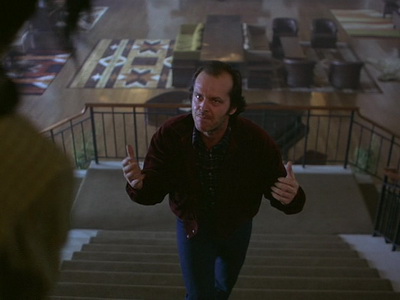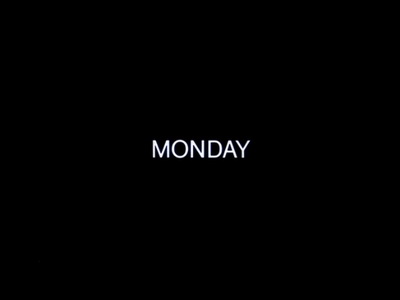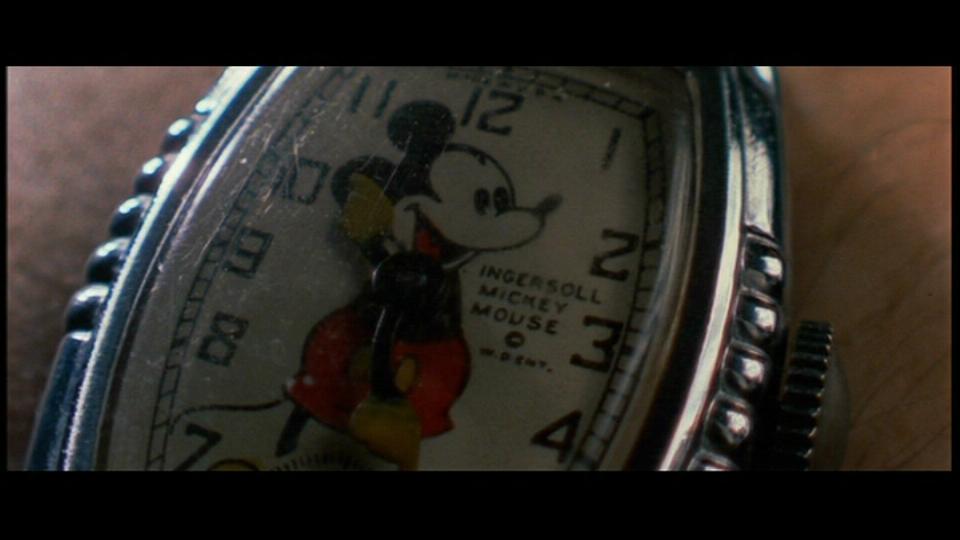      |
TEMPORAL ORDER
In placing the movements in time, a film gains an order-- structure. Chronological arrangements, organization through the experiential qualities as datum, multiple durational conscious working simultaneously, or even an imagined space in a communal ‘floating time’ are some of the examples in this classification.
In the movie ‘Shining’, Kubrick uses a direct chronological narrative. In this linear progression of movement through time, we are directly placed in the space with the characters with restricted amount of knowledge. The viewers are very much involved and the emotional depth of field is maximized in this first-person experience of time.
We can also observe a technique where a black screen with time indication is used between a set of narrative shots. Beginning with ‘the closing day’ which leaps an entire season to winter time, gradually narrowing down to indicate the day of the week, followed by time of the day. This zooming in to the shorter duration of time is directly proportional to the build up of suspense in the plot, a critical component to the creation of an appropriate atmosphere and beat.
Similarly, in the film ‘Zoo’, a literal time hinting visual cues are adopted. As well, in conjunction with the narrative, the clips of decomposition create a different time-space evolving simultaneously.
‘Lisbon Story’ and ‘Paris JeT’aime’ divides the film into chapters of moments. Where new set of scene is introduced, an indication of place as text also implies the change in time. With these glimpses of moments we are able to imaginatively structure a grand plot.
‘Paris JeT’aime’, uses an interesting technique where each new scene introduced is a series of events that are intertwined and made into one scene in the very end, tying a seemingly unrelated stories to form a statement on the genius loci of Paris. Similar technique is used in the film ‘Love Actually’.
Flash backs, and flash forwards can also construct a time progression in which the orders of time are curated into orders of desired sequence. TV series ‘Lost’ is an example of this kind.
‘Berlin’ and ‘Man with a Movie Camera’ showcases the city itself, with all the life within it, as the actor and the stage. Day and night are the condition, the conflict and the setting that governs the story line. The ‘collage’ of individual vignettes blur the linear conception of time as a consequence of event progression, and focus on the time of the day that remains to the beat and the movements are placed accordingly.
In ‘Paprika’, the parade scene becomes an imagined space shared by the characters. Time, in this space, seems to comply with the one outside of dreams, but other than the flow of time, day and night condition does not seem to be synchronized. There are moments when the imagined activities that take place in this parade world that compresses a piece of time. For example, the growth of the child is made possible by consumption of tangible matter instead of aging. Time here is floating, controllable just like anything else, when dreamed of.
|